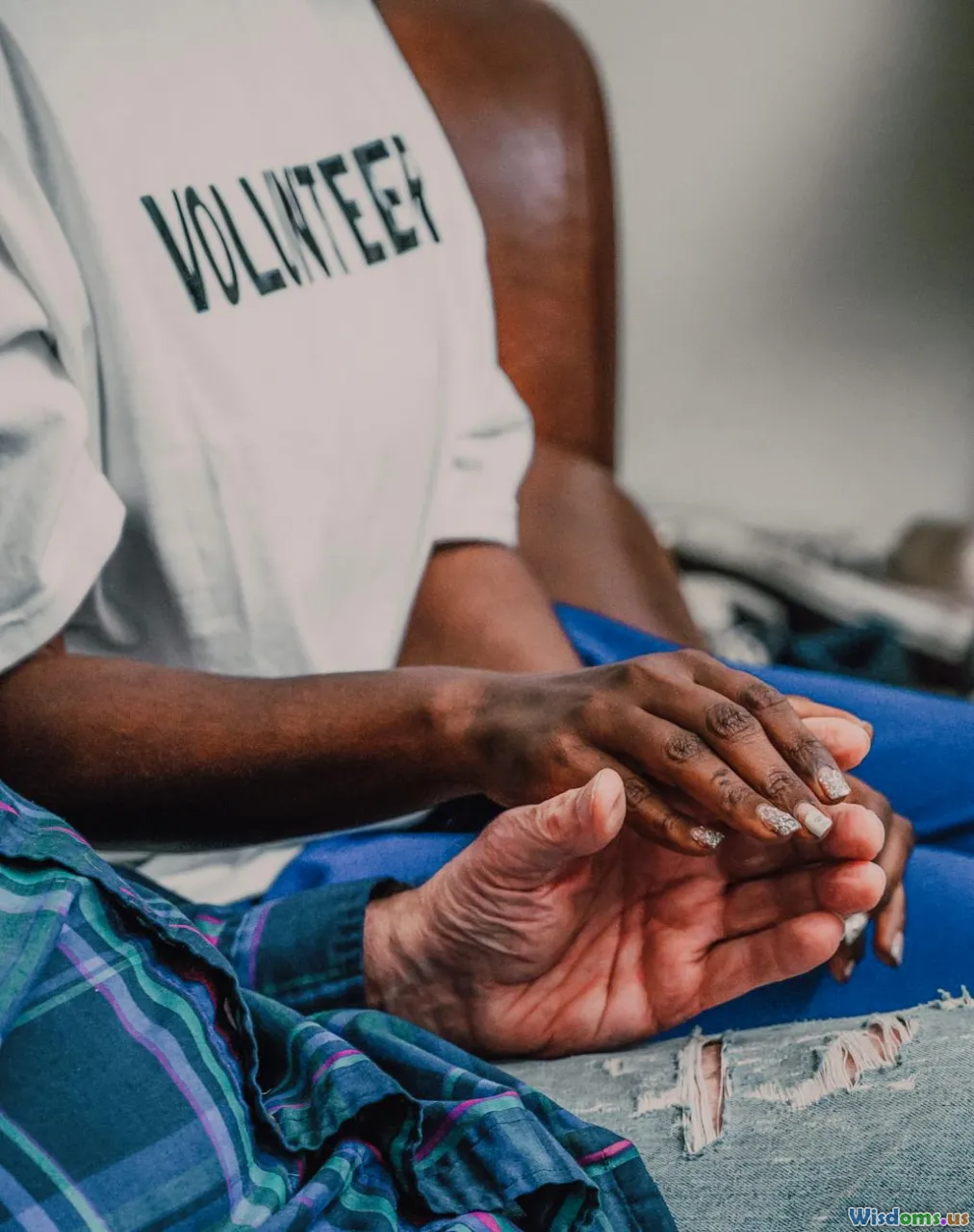
Adopting Rescue Dogs Success Stories and Tips
15 min read Inspiring rescue dog adoption stories and top tips for a smooth transition. (0 Reviews)
Adopting Rescue Dogs: Real Success Stories and Tips for a Fulfilling Journey
Opening your heart and home to a rescue dog is more than a kind gesture—it's a transformative experience for both human and canine. Countless families have welcomed shelter dogs into their lives, uncovering rich, rewarding bonds and witnessing remarkable changes in their four-legged friends. But what does it really take to help a rescue thrive? In this deep dive, we’ll share inspiring success stories alongside actionable tips to guide your adoption journey.
Rescue Dog Stories: Lives Changed for the Better

Rescuing isn’t just about saving a life; it’s about rewriting a story. Here are a few touching tales of transformation.
Charlie: From Fearful to Family Favorite
Charlie, a young Beagle mix, spent months in a shelter after being found roaming the streets. The stress of shelter life made him timid—he’d cower at loud noises and avoid eye contact. When the Hernandez family adopted him, they discovered patience was key. Little by little, through gentle routines and plenty of treats, Charlie’s confidence soared. A year later, this once-timid pup now gleefully leads neighborhood walks and has become an irreplaceable playmate to the kids.
Luna’s Second Chance
Before adoption, Luna, an older Labrador Retriever, faced neglect in her prior home. The Martinez family was at first hesitant about adopting a senior. But as Luna settled in—grateful for daily walks, a cozy bed, and belly rubs—her gentle, affectionate nature flourished. Luna has become a beloved companion, teaching her family about resilience and unconditional love. Her story highlights the joy of adopting older dogs, who often wait far longer in shelters.
Max’s Rescue to Therapy Success
Max, a scrappy terrier mix, was rescued by Sarah Kim, who soon noticed his innate empathy. Sensing his special disposition, Sarah trained him as a therapy dog. Now, Max visits hospitals and schools, offering solace and comfort to children and the elderly. His journey is a testament to the incredible potential hidden within every rescue dog.
Why Rescue Dogs Thrive: Key Factors Behind Their Transformation

Rescue dogs may come with challenges, but time and again, they blossom into loyal, loving companions. What’s their secret? Consistency, patience, and environment play critical roles.
- Rebuilding Trust: Many rescues have traumatic histories, making patience non-negotiable. Dogs like Charlie showed that kindness and consistency helped dissolve fear.
- Structure and Routine: Dogs feel secure when expectations are clear. The simple predictability of regular mealtimes and walks helps rescues decompress.
- Enrichment and Exercise: Luna’s energy increased with daily walks and interactive toys; these activities eased her transition and built her confidence.
- Medical and Emotional Care: Shelters often provide basic healthcare, but vet visits post-adoption are crucial—diet adjustments, parasite control, and dental care can make a world of difference.
Pre-Adoption Advice: Choosing the Right Dog for Your Family

Finding your family’s best friend starts with careful selection. Before you visit a shelter, consider these factors:
- Lifestyle Match: Are you seeking a chill couch companion or an adventure buddy? An active family might thrive with a playful pup, whereas an older dog suits a quieter home.
- Experience Level: First-time dog owners may prefer breeds or mixes with mild temperaments. Senior dogs, often overlooked, come with calmer energy and established house manners.
- Meet-and-Greet Sessions: Interact with your potential pup multiple times. Ask shelter staff about energy levels, socialization needs, and behavioral quirks.
- Assessing Age and Size: Puppies require more time and training; adult dogs often have established routines. Consider the dog’s size with respect to your living space.
Example: When the Lin family visited their local rescue, they interacted with three dogs and discovered that Daisy, a middle-aged mutt, instantly bonded with their young daughter. Daisy’s gentle nature was a perfect match for the family’s needs.
Navigating the First Days: Smooth Transitions Home

The first few days can set the tone for your rescue dog’s new life. Success hinges on thoughtful, incremental introductions.
- Prepare a Safe Space: Prior to arrival, set up a quiet area with a bed, food, water, and toys. Avoid overwhelming your new dog with too much territory at once.
- Structure the Day: Consistent meal and walk schedules foster a sense of security. Timed bathroom breaks help set house training standards.
- Allow Decompression: Moving to a new environment is stressful. Avoid introducing too many visitors and limit new experiences initially.
- Monitor Health and Behavior: Watch for signs of overstimulation or illness. It’s common for rescues to hide or skip meals initially—patience is key.
One adopter, Mike Peterson, shares, “I expected my rescue, Bella, to run circles with excitement, but she hid under the table for hours. Over a few days, soft music and gentle encouragement coaxed her out, and soon she was snuggling on the couch.”
Training Techniques for Success

Training isn’t just about commands—it’s about building trust and communication. Rescue dogs may have no prior training or inconsistent experiences, so start slow.
- Positive Reinforcement: Use treats, praise, and toys to encourage good behavior. Avoid harsh corrections, which can retraumatize.
- Start Simple: Basic cues like “sit,” “stay,” and recall help create routine and predictability. Practice in familiar settings without distractions, then progress.
- Socialization: Introduce your rescue to new sights, sounds, and people gradually, using positive associations. Doggy classes can be especially beneficial for social confidence.
- Professional Help: Some rescues need extra support from positive-based trainers or behaviorists. This is especially true for dogs with fear or aggression histories.
Max’s successful transformation into a therapy dog wasn’t overnight—it required countless short, positive sessions and a professional trainer’s guidance.
Common Challenges (and Solutions!) in Adopting Rescue Dogs

Every journey has bumps. It’s important to set realistic expectations and arm yourself with proactive strategies.
Housebreaking Hurdles
Shelter dogs may struggle with house manners. Even adult dogs can treat a new home like unfamiliar territory.
Solution: Take frequent potty breaks, reward immediately for outdoor toileting, and supervise inside to prevent accidents. Crate training can fast-track success.
Fear and Anxiety
Some rescues display nervousness, whether from past trauma or just change in environment.
Solution: Prioritize patience and provide a predictable schedule. Use calming aids like Adaptil diffusers, and consider quiet spaces for retreat. Consult vets for severe anxiety; some cases benefit from medication and behavior therapy.
Destructive Habits
Chewing, digging, and barking are common, especially during adjustment periods.
Solution: Offer ample appropriate outlets (chew toys, puzzle games). Exercise is crucial for channeling energy productively. Redirect unwanted behavior kindly; never punish after the fact.
Inter-Pet Integration
Introducing a new rescue to existing pets can be complex.
Solution: Go slowly with introductions, keeping animals separated initially. Exchange bedding to familiarize scents, and supervise all first meetings. Professional trainers can support complex household dynamics.
Celebrating Milestones: Documenting Progress and Growth

Capture your rescue’s journey! Many adopters create dedicated photo albums or social media pages, noting milestones: first walks, successful training, or new friendships.
Example: The Alcantara family started an Instagram for their adopted dog, Molly, to share her progress with friends. They documented each hurdle overcome—from her first tail wag at home to outings at the local park. This practice not only creates lasting memories but also inspires others to consider adoption.
Many animal shelters follow up with photo requests or stories, drawing attention to the positive impact of rescue work.
How to Support Rescue Dogs Beyond Adoption

Not ready to adopt? You can make a difference! Here are ways to boost the rescue community:
- Fostering: Temporarily housing pups in transition provides critical relief to crowded shelters and preps dogs for permanent home life.
- Donations: Food, blankets, toys, or funds go straight to care and enrichment.
- Volunteer Time: Many shelters seek dog walkers, play companions, and handy volunteers for offsite events.
- Community Advocacy: Social media sharing, fundraising, and adoption event promotion drive awareness and matches.
- Education: Help others by sharing your own adoption stories or offering advice to new adopters.
Local initiatives, like Delaware’s successful “No Kill” push, show how collective support leads to fewer euthanasias and more wagging tails.
Tips from Experienced Adopters

Experts—those who’ve welcomed rescues into their lives—have uniquely practical perspectives:
- “Go in with Open Eyes and an Open Heart.” It takes time for true personalities to emerge.
- “Celebrate Small Wins.” A rescue’s first playful tail wag or a gentle nuzzle is progress worth cheering.
- “Ask for Help When Needed.” Shelters often provide post-adoption support, and local trainers love guiding new adopters.
- “Consistency Trumps Perfection.” Sticking to routines, rather than striving for flawlessness, leads to trust.
- “Patience Is Your Best Tool.” Progress may feel slow, but it’s transformative over time.
Adopter Lisa Wu notes, “Every challenge with Rex taught us something new. A year in, it’s hard to imagine our life without him.”
The Long-Term Rewards and Ripple Effects of Rescue Adoption

Adopting a shelter dog is more than a solution to pet overpopulation—it's an investment in resilience, compassion, and lifelong companionship. Rescuers gain devoted friends, children learn kindness, and—over time—neighborhoods transform as rescue stories inspire future adopters.
As nearly every owner will attest, the dog you save often ends up saving you right back, in ways you could never expect. Through challenges overcome, milestones celebrated, and milestones yet to come, the rescue journey transforms not just the animal’s life, but your own, forever.
Rate the Post
User Reviews
Other posts in Dog Breeds & Behavior
Popular Posts
















